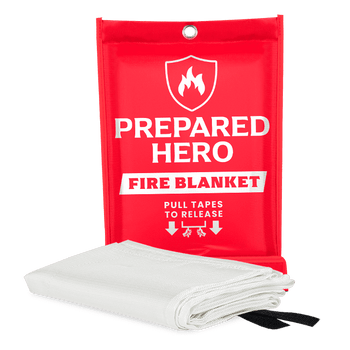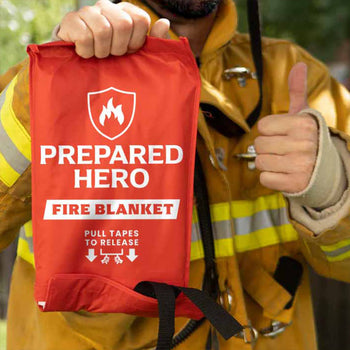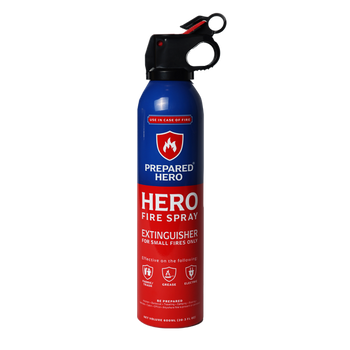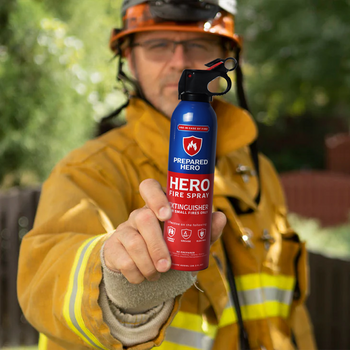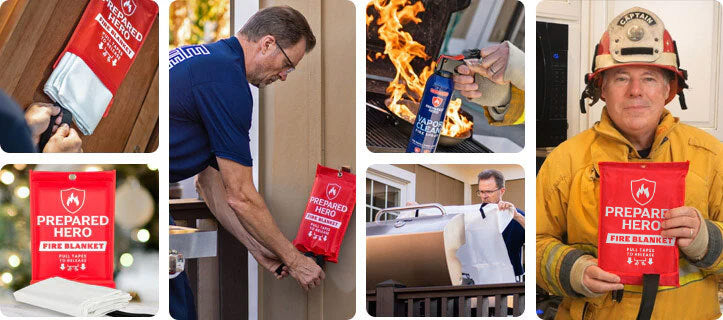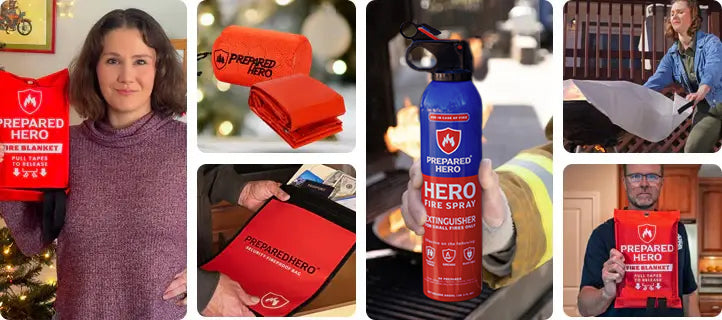Fire extinguishers have different symbols that tell you what fires they can handle. If you’ve ever seen a mix of...
No one wants to come home to find their place ransacked. The FBI estimates that there are over a million reported cases each year, with victims losing about $3 billion. Most break-ins happen at homes, and many involve forced entry.
The good news? You can take simple steps to make your home a tough target. In this guide, we’ll break down practical ways to protect your home and keep burglars out.
What Is a Burglary?

Burglary is when someone enters a building without permission, usually to commit a crime. It doesn’t always involve breaking in. Just being somewhere you’re not supposed to be with bad intentions counts.
There are different levels of burglary. First-degree burglary is the most serious. It happens when someone breaks into a home while someone else is inside, has a weapon, or assaults someone. This can lead to up to 20 years in prison.
Second-degree burglary applies to places like banks, pharmacies, or schools. It usually involves force and tools for breaking in. The punishment can be up to 10 years.
Third-degree burglary is when someone enters a building to commit a felony or gross misdemeanor, while fourth-degree burglary is when someone enters a building to commit a less serious crime.
Contrary to popular belief, burglary isn’t just about stealing. Even if nothing is taken, just illegally entering a place with criminal intent can lead to charges. It also doesn’t have to happen at night. Some laws used to require that, but it can happen anytime nowadays.
In addition, the penalties depend on factors like where the crime happens, whether weapons are involved, and if anyone is present. In some cases, a person convicted of burglary must serve a minimum jail sentence, especially if they break into an occupied home.
Bottom line: If someone enters a place without permission and intends to commit a crime, they’re looking at a burglary charge.
Burglary vs. Robbery

Understanding the difference between burglary and robbery can help clear up a lot of confusion. While both involve crime and theft, they’re not the same thing. Here are the differences between burglary and robbery:
Entry
A burglary happens when someone illegally enters a building, home, or other structure with the intent to commit a crime. That crime could be theft, but it doesn’t have to be. The person could intend to commit vandalism, assault, or any other felony. What matters is that they weren’t supposed to be there in the first place.
A burglary can happen even if no one is home. For example, a burglary occurs if someone sneaks into an empty house to steal jewelry. Even if they don’t end up taking anything, just the act of breaking in with criminal intent counts.
On the other hand, robbery involves stealing from a person directly, often using force or threats. Unlike burglary, robbery doesn’t require breaking into a home or building. It can happen anywhere—on the street, in a store, or at a park.
A key part of robbery is intimidation. The criminal uses force or threats to take something. For example, a robbery occurs if someone holds up a convenience store with a gun or snatches a purse while pushing the owner. It’s still robbery as long as force or threats are involved, even if there’s no weapon used.
Victims’ Presence
Another big difference between burglary and robbery is that burglary doesn’t require a victim to be present. A person can commit burglary in an empty building and still be charged. On the flip side, a robbery requires a victim who’s directly threatened or harmed.
For example, it’s burglary if someone breaks into a store after hours to steal electronics. But it’s robbery if they hold up a cashier during business hours and demand money.
Violence
Robbery involves force or threats, so it’s seen as more violent than burglary. For this reason, robbery often has harsher penalties. A simple burglary, like sneaking into a warehouse and stealing supplies, might lead to jail time. However, a robbery involving a weapon can result in longer sentences.
Can Burglary and Robbery Happen Together?

Yes, burglary and robbery can happen together. For example, if a thief breaks into a home and threatens the homeowner to hand over valuables, they’ve committed both crimes. The burglary happened when they unlawfully entered. The robbery happened when they used force to take something from the owner.
Burglary and robbery might seem similar, but they’re different crimes. Burglary is about illegal entry with criminal intent, while robbery is about taking something from a person through force or intimidation. Understanding these differences can help you recognize how the law treats each crime.
Larceny vs. Burglary

Let’s break down the differences between the two so you can understand how the law sees each crime and why burglary is usually treated more seriously.
Entry
Larceny doesn’t require entering a building or structure. It happens when someone takes something that isn’t theirs, like shoplifting or stealing from a parked car. Burglary always involves some form of illegal entry, whether it’s breaking in, sneaking in, or walking in without permission.
Intent
Burglary is based on intent. For example, it’s burglary if someone enters a building planning to commit a crime but doesn’t follow through. On the flip side, larceny only happens when the theft actually occurs. If someone intends to steal but never takes anything, they haven’t committed larceny.
Use of Force
Larceny is usually a non-violent crime. There’s no force or threat involved; the thief just takes the property. Burglary can sometimes involve force, especially if breaking and entering is required. However, force isn’t necessary—just unlawful entry with criminal intent is enough.
Common examples of larceny include shoplifting, stealing a bike, or taking a wallet from an unattended bag. On the other hand, examples of burglary include breaking into a house to steal jewelry, sneaking into an office to commit fraud, or entering a detached garage to vandalize.
Legal Consequences
Larceny is often classified as a misdemeanor if the stolen property is of low value. However, it can become a felony if the value is high. Burglary is usually a felony, with penalties increasing if weapons are involved or if the crime happens in an occupied home.
Can Larceny and Burglary Happen Together?

Yes, larceny and burglary can happen at the same time. For instance, someone commits burglary if they break into a house to steal electronics. If they actually take the electronics, they’ve also committed larceny.
Larceny is about taking property, while burglary is about unlawful entry with intent to commit a crime. Burglary is generally considered more serious because it can threaten people’s safety, even if nothing is stolen.
Is Burglary a Felony?
Yes, burglary is usually a felony. It’s the unlawful entry into a building with the intent to commit a crime. However, not all burglaries are treated the same way. In some states, it could be charged as a misdemeanor, depending on what was stolen, where the crime happened, and other details.
Burglary charges can be divided into different degrees. First-degree burglary usually happens in someone’s home and is taken very seriously. It often comes with harsher penalties, like longer prison sentences. Second-degree burglary typically involves a commercial building or a non-habited space and carries a less severe penalty.
The punishment for burglary varies a lot. Felony convictions generally mean prison time (usually more than a year). Some states even have prison sentences that could last decades, especially for first-degree burglary. If convicted, you might also face fines, restitution (paying for damaged or stolen property), and probation.
While burglary is mostly a felony, there are exceptions. For example, burglarizing a vehicle could be a misdemeanor. But in most cases, burglary is a serious crime with significant penalties.
Burglary Prevention Tips

Protecting your home from burglaries doesn’t need to be complicated or expensive. There are simple and effective steps you can take to keep burglars at bay. Here are the best burglary prevention tips:
1. Lock Your Doors and Windows
It sounds basic, but you’d be surprised how many people forget this simple step. Always lock your doors and windows when you leave home, even if you’re only stepping out for a short while. Exterior doors should also be solid and sturdy and with deadbolt locks. Don’t rely solely on a key-in-the-knob lock because they’re not as secure.
Plus, make sure your windows have strong locks. You can also install secondary locks or use a pinning system for sliding windows for extra security. Invest in special locks if you have sliding glass doors as well.
2. Install Exterior Lighting
Burglars thrive in the shadows, so making your home well-lit can discourage them from approaching. Install motion-activated lights around your property, especially near entrances, windows, and dark areas. These lights will surprise any intruder and make them think twice before entering your home. Plus, keep your exterior lights on overnight or connect them to timers to make your house look occupied when you’re away.
3. Don’t Tempt a Thief
Burglars often target homes that appear easy to break into or have valuables in plain sight. Avoid leaving expensive items like lawnmowers, bikes, or grills in your yard. Store them in a shed or garage when not in use, and always lock up your garden sheds. Similarly, avoid leaving valuables visible through windows. These include electronics, cash, or jewelry. Plus, close your curtains or blinds when you’re not around.
4. Reinforce Doors and Windows
Not all doors and windows are created equal. Make sure your exterior doors are tough enough to withstand an attempted break-in. Use solid-core or metal-clad doors and reinforce them with quality deadbolts. Make sure all the hinges are on the inside of the door. Use non-removable pins for extra protection. Also, consider adding a strike plate to your doorframe and secure it with three-inch screws.
Remember, sliding doors and windows can be weak points in your security. Install a dowel or a blocking device on the inside tracks of sliding windows and doors to make it harder for intruders to open them.
5. Get a Security Alarm System
An alarm system is one of the most effective ways to prevent burglaries. Even the presence of security cameras or signs can discourage criminals. If you opt for a full home security system, make sure it includes cameras and motion sensors. The alarm should also be loud enough to attract attention. They can also alert the authorities for you if they’re connected to a monitoring service.
Don’t forget to activate your alarm when you leave. Many burglaries happen when alarms are not properly set, so don’t fall into that trap.
6. Keep Your Property Clean and Well-Kept
Burglars love places where they can hide, so keep your yard clear. Trim any trees or bushes near windows and doors that could give intruders cover. You don’t want anyone sneaking around your house unnoticed.
A well-maintained home also sends the message that you take care of your property. Burglars are less likely to target homes that look well cared for. Keep your yard free of trash, debris, and overgrown vegetation. Promptly repair broken fences, windows, or locks as well. Plus, don’t leave ladders or tools outside where they could be used to access higher levels of your home.
7. Secure Your Garage
Attached garages are a prime target for burglars, especially if they provide access to your home. Always keep your garage door closed and locked when not in use. If your garage has an internal door leading into your house, make sure that door is just as secure as your exterior doors. Plus, consider installing a separate alarm for your garage, especially if it’s connected to the house.
8. Never Leave Spare Keys Outside
Hiding a spare key under a doormat or flowerpot is an invitation for burglars. They know all the usual hiding spots, and it’s too risky to rely on them. Leave a spare key with a trusted neighbor or friend instead. This way, you don’t have to worry about someone finding your secret stash.
9. Be Smart When You’re Away
Don’t leave a trail of clues that show you’re gone. If you’re going on vacation, ask a trusted neighbor to pick up your mail, newspapers, and packages so they don’t pile up. You can also stop deliveries or have them held at the post office. Set timers on your lights, radios, or TVs to make it look like someone is home. If possible, have a neighbor watch your house while you’re away.
10. Form a Neighborhood Watch
Get to know your neighbors and look out for one another. If you see anything suspicious, report it to the authorities immediately. You can also form a neighborhood watch group to keep an extra set of eyes on your area, especially during vacations or late nights.
Bring pepper sprays and personal defense alarms to deter intruders and warn others nearby.
These small, easy-to-carry self-defense tools give you extra peace of mind, especially if you encounter an unexpected threat.
Does Renters Insurance Cover Burglary?

Yes, renters insurance usually covers burglary. If someone breaks into your home and steals your stuff, your policy can replace it. These include electronics, clothes, and furniture. Even if your belongings are stolen from your car, a hotel room, or a storage unit, renters insurance can cover the loss.
Just keep in mind that your policy has coverage limits. High-value items like jewelry or collectibles might only be covered up to a certain amount unless you have extra coverage. You also need to pay a deductible before insurance kicks in. If your stolen laptop was worth $1,200 and you have a $500 deductible, your insurer would cover the remaining $700.
There are two types of payouts: actual cash value (ACV) and replacement cost value (RCV). ACV pays what the item is worth today, while RCV covers the cost of a brand-new replacement.
You also need a police report and a list of stolen items with their estimated value to file a claim. It’s better if you have receipts or photos of the stolen items.
Conclusion
Burglary is a common crime, but you can do something to protect your home. Lock your doors and windows, use strong lighting, and invest in a security system. Keep your property well-maintained, don’t leave valuables in plain sight, and stay aware of your surroundings. Remember, preparation goes a long way in keeping your home and family safe.
Do you want reliable, easy-to-use, and affordable safety tools that scare off intruders? Check out Prepared Hero’s personal safety tools here, and get up to 51% off on certain items. Stay prepared, hero!


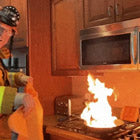 Fire
Fire Safety
Safety Survival
Survival Protection
Protection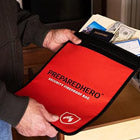 New
New
 Fire
Fire Safety
Safety Survival
Survival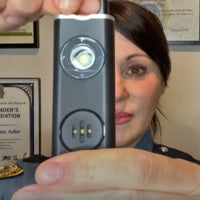 Protection
Protection New
New